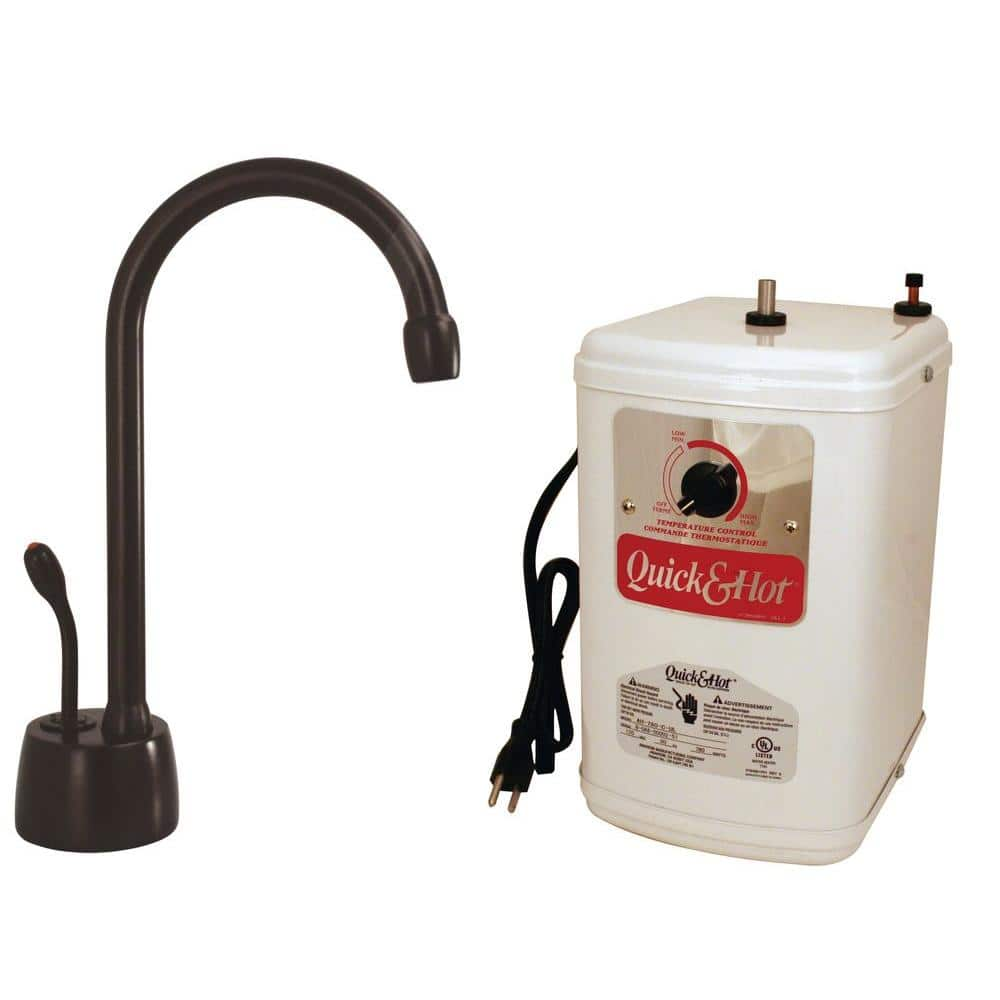Westbrass Velosah Single-Handle Hot Water Dispenser Faucet with Hot Water Tank in Oil-Rubbed Bronze
Faucet features a high-arc spout. Single handle automatically turns off hot water for your safety. Available in a variety of finishes to complement your fixtures.
The Westbrass Velosah Single-Handle Hot Water Dispenser Faucet in Oil-Rubbed Bronze with Hot Water Tank provides great sink clearance with its high-arc spout and an attractive, bronze appearance. The faucet’s handle automatically shuts off for your safety. Install a filter (not included) between the water supply and tank to clean water before heating. The faucet comes with a hot water tank and mounting materials for convenient, single-hole installation.
- Oil-rubbed bronze finish for an attractive look
- Single-handle design for quick and easy water control
- High-arc spout provides great sink clearance
- Auto-off hot handle for your safety
- Install a filter (not included) between the water supply and tank to clean water before heating
- Includes a hot water tank
- Designed for single-hole installation (mounting materials included)
- Do not use plumber’s putty for installation use silicone seal
Additional information
| Connection size (in.) | 1/4 In. |
|---|---|
| Faucet Height (in.) | 6.5 |
| Spout Height (in.) | 6.5 |
| Certifications and Listings | UL Certified |
| Manufacturer Warranty | Limited warranty |






by Theresa
Works very good. The one suggestion that should be pointed out. Materials required for plumber to install the tank. Shut off valve and especially the “T” Fittting is not provided with the components supplied with the packaging. My plumber did not have “T” Fitting in his truck. Had to come back in two days to finish job. Added to my billing. Time and material.
by Granny
Being able to quickly make a cup of tea or hot chocolate is a real treat. Hope to be using this for many more years.
by Jettie
The unit was not difficult to install, I have had insinkerator brand in the past but this unit was about $200 cheaper with the bronze faucet. It’s been in use for a week with no issues. The only thing I would change is the connections on top the tank and the plastic hot water line.
by Steve
No problems after 3 weeks of use. My wife loves it!